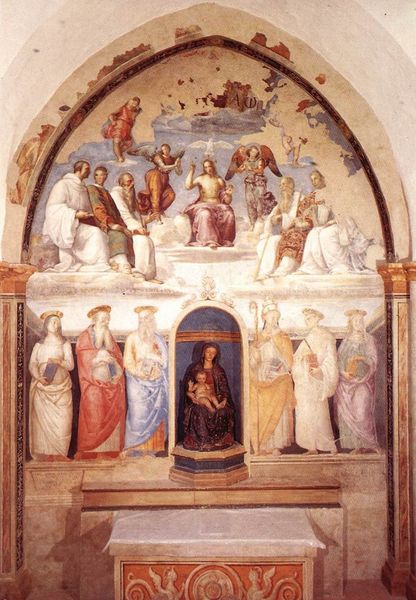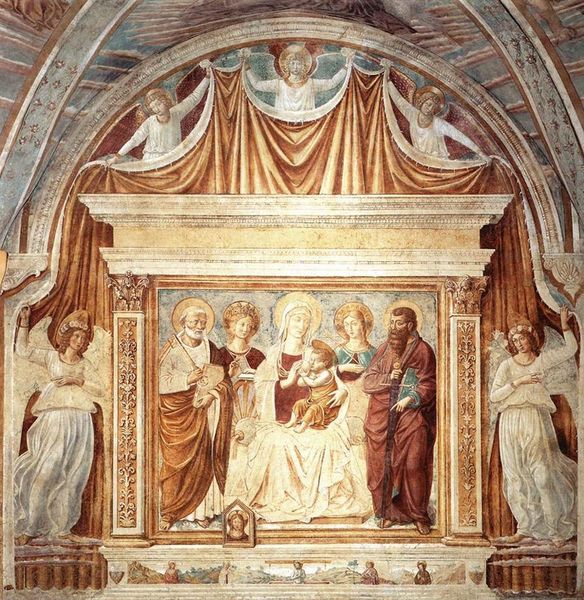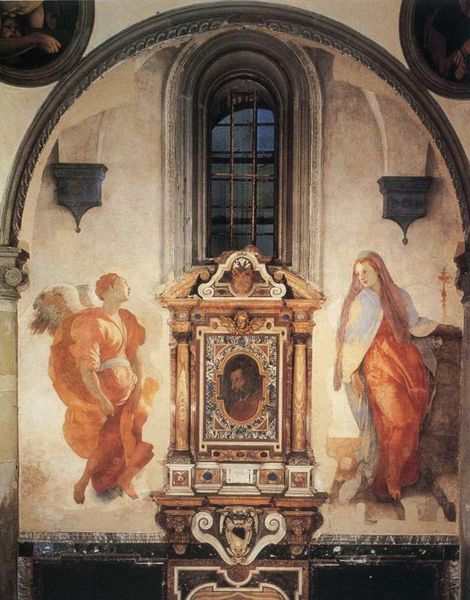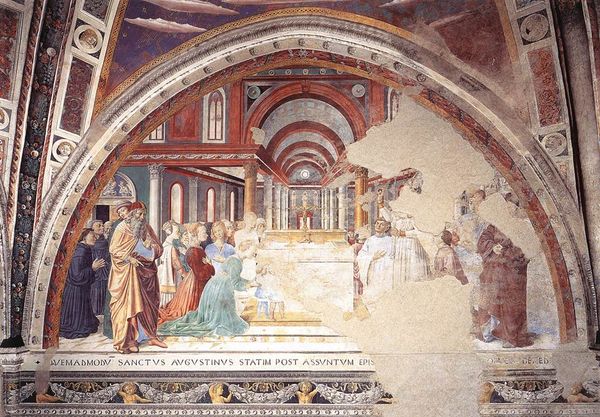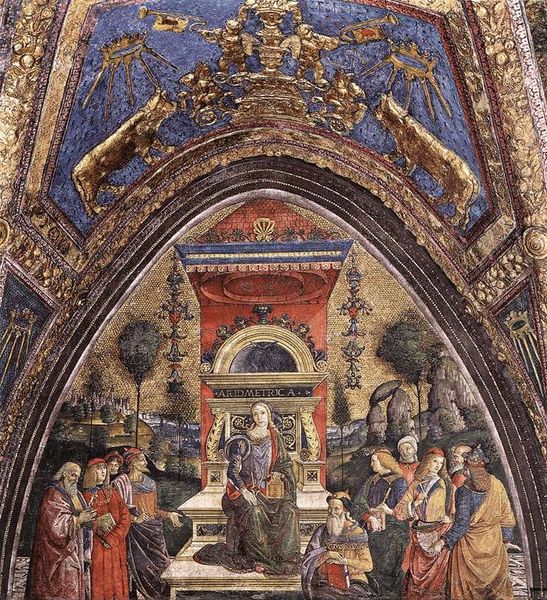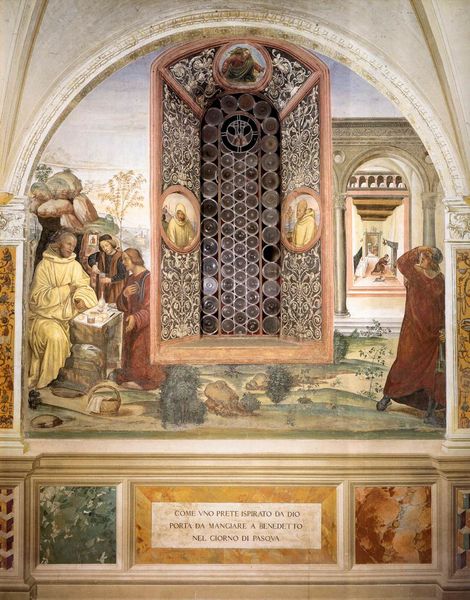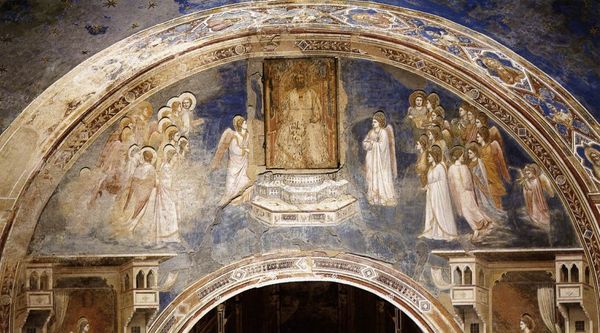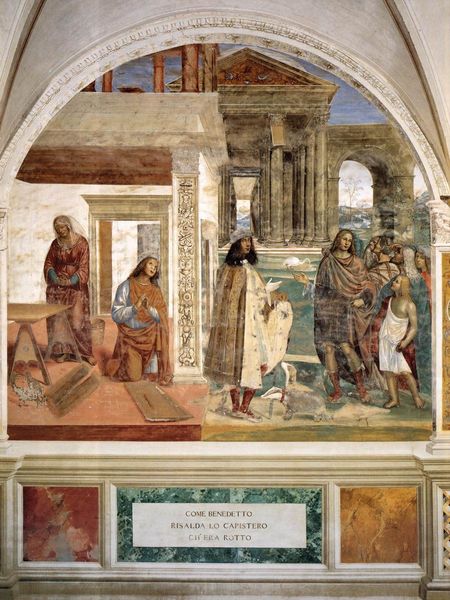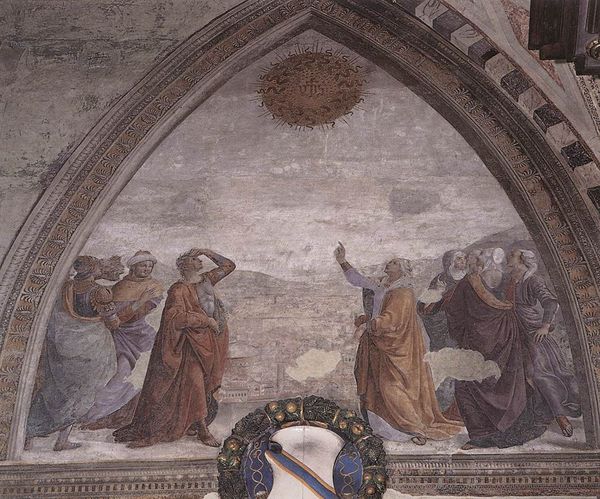
painting, fresco
#
painting
#
sculpture
#
holy-places
#
fresco
#
oil painting
#
arch
#
christianity
#
history-painting
#
italian-renaissance
#
statue
#
christ
Copyright: Public domain
Curator: What strikes me first about this apse, dating back to 1471 and attributed to Domenico Ghirlandaio, is its slightly faded grandeur, as if we're seeing it through the mists of time. There's a subdued solemnity to the color palette. Editor: I'm drawn to the subdued color scheme as well, a somewhat limited palette working in tandem with the tight composition of the forms, framed architecturally. There's a careful construction happening here, wouldn’t you agree? Curator: Absolutely. Ghirlandaio was very conscious of framing. It was made during a time when civic piety was intertwined with displaying public wealth. Consider that it was part of a larger artistic movement throughout Italy aimed to enhance both communal identity and political legitimacy via such depictions. Editor: Notice how the vertical columns rise up to frame the central figure and yet still conform to the rounded shape of the apse itself. It's quite clever, integrating geometric forms and natural figures seamlessly. What of the subjects; can you unpack some of this iconographic density? Curator: Certainly. The painting is rich in Christian iconography, the central figure most likely represents a saint or church father known for wisdom, holding a symbolic representation of a city or a church, literally resting on the subjugated form of a prostrate foe; perhaps meant to signal a triumph over ignorance or sin. Note too the classical robes reminiscent of the imperial age, which underscore not only holy dignity, but an age of reason the Renaissance was at great pains to resurrect. Editor: The tension between earthly power and heavenly mandate plays out effectively then across this constrained space; the fresco taking on architectural presence with what appears to be deliberate structural intent. Curator: Indeed. Art wasn’t just art during the Renaissance, it was social messaging on public display, constantly shaping and reflecting Florence’s ambitions for power and spiritual leadership. Editor: It really is an amazing insight into the confluence of art, religion and politics that characterized this key historical moment, carefully composed with intention. Curator: A potent reminder of art's profound ability to mirror, shape and direct societal ambitions, even across centuries.
Comments
No comments
Be the first to comment and join the conversation on the ultimate creative platform.
